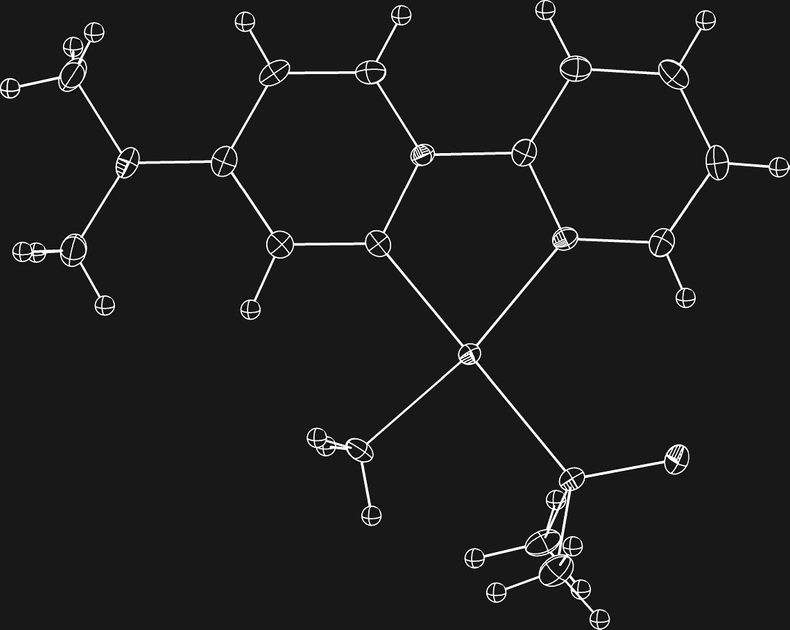



G4071
T&Th: 8:40-9:55pm
320 Havemeyer
Instructor:
Prof. Jonathan S. Owen
uni: jso2115
ext: 1-5879
Office: 504 Havemeyer
Office Hour: By Appointment
Teaching Assistant:
Christopher Hwu
uni: ch2953
Office Hour: Wednesday, 1:10-2:25pm
711 Havemeyer Hall
- …



G4071
T&Th: 8:40-9:55pm
320 Havemeyer
Instructor:
Prof. Jonathan S. Owen
uni: jso2115
ext: 1-5879
Office: 504 Havemeyer
Office Hour: By Appointment
Teaching Assistant:
Christopher Hwu
uni: ch2953
Office Hour: Wednesday, 1:10-2:25pm
711 Havemeyer Hall
- …

Inorganic Chemistry - G4071
Syllabus
Introduction
This course is intended to provide an introduction to the principles of bonding in inorganic compounds. Emphasis will be placed on the importance of structure and symmetry to the orbital interactions and spectroscopy of molecular transition metal complexes.
Grading
35% Final Exam
30% Midterm Exam (October 23rd)
30% Homework
5% Class Participation
Class Participation
Students are encouraged to attend all of the lectures. Please notify Prof. Owen if you need to miss a lecture. You are expected to participate in class discussions and to formulate questions during the lecture to help clarify the material. Your attendance and contributions to the atmosphere in the classroom will be used to determine your class participation grade.
Homework Policy
Homework sets, assigned approximately twice per month, are to be handed in at the beginning of class. Assignments turned in one day late will be assessed a 50% penalty; two days late a 75% penalty, and after two days the homework will be graded, but will no credit will be given. Collaboration is allowed, though each collaborator is expected to work all of the problems.
Exams
A midterm examination will be given on October 23rd to test your conceptual understanding of the lecture material. This will be a traditional closed note exam with a substantial proportion of the questions taken directly from the lecture notes. The final exam will be a comprehensive exam with the majority of questions derived from material presented after the midterm.
Periodic Table Quiz - September 9th
Textbook
Miessler and Tarr, “Inorganic Chemistry”, 5th, 4th, or 3rd Editions will work.
Course Outline
I. Bonding and Resonance in Inorganic Complexes
Periodic trends, Lewis representations, VSEPR model, hybridization, Bendt’s rule
II. Symmetry and Molecular Orbitals
Symmetry operations, point groups, matrix representations of symmetry operations, character tables, molecular orbital diagrams
III. Coordination Chemistry of the Transition Metals
L,X ligand bonding formalism, electron counting, the 18-electron rule, formal oxidation states valence, sigma-donors , pi-donors, pi-acceptors, Ligand Field Theory
IV. Spectroscopy
The spectrochemical series, d-d and charge transfer transitions, vibrational spectroscopy
V. Special Topics
Ligand Substitution, Cytochrome P450, Solid State Chemistry
Reading Assignments
Lectures 1 and 2: Chapter 2: pages 21-40 (5th Ed.) and pages 29-47 (4th Ed.) and pages 29-47 (3rd Ed.)
Lectures 2 - 6: Chapter 3: pages 45-69 (5th Ed.) and pages 51-76 (4th Ed.) and pages 51-72 (3rd Ed.)
Lectures 7 - 9: Chapter4: Pages 75-100 (5th Ed.) and pages 81-108 (4th Ed.) and pages 76-103 (3rd Ed.)
Lectures 10 - 12 : Chapter 5
Lectures 12 - 15 : Chapters 6 and 10.3-
Lecture 16 - : Chapter 13
© 2019